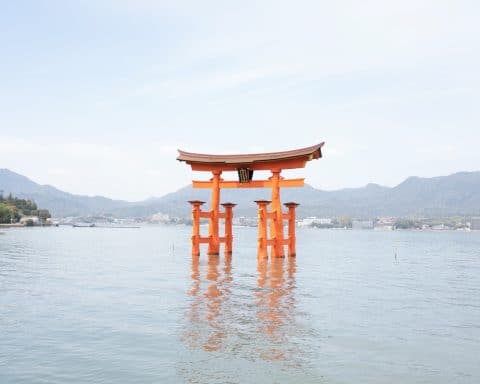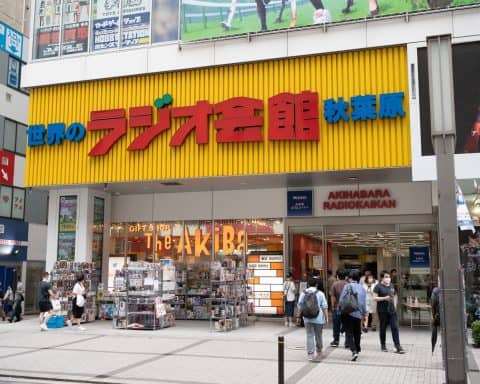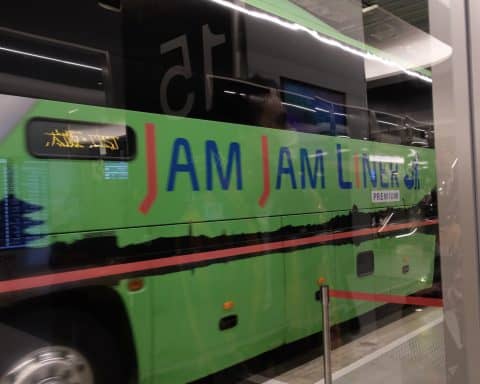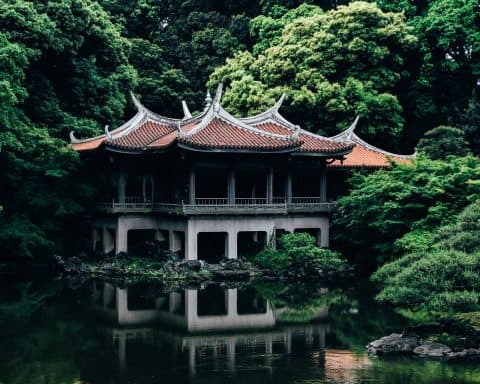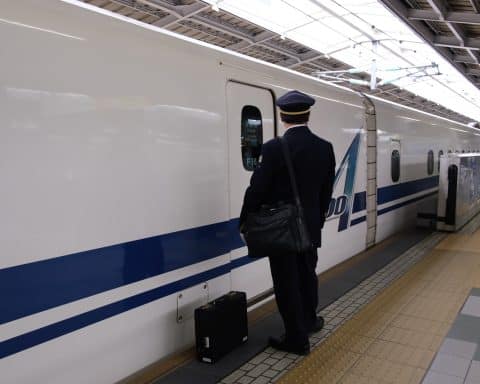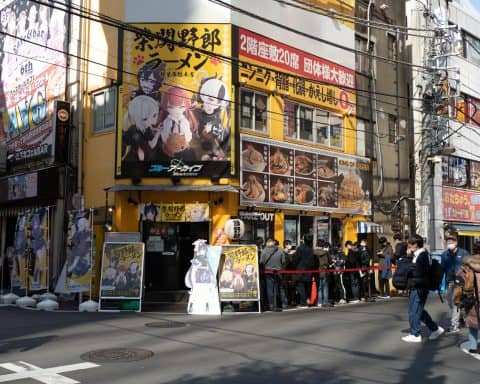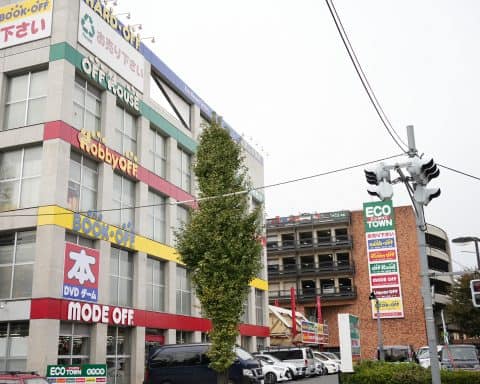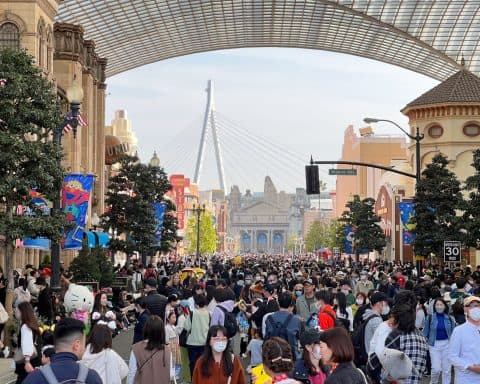The problem with having a holiday in Japan, is that you often don’t have as much time as you like in any one area. Of course, when you make the trip from the your home country to Japan, you’ve probably already decided you want to see as much as possible, and I really don’t blame you. As such, I’ve created a first time Hiroshima Itinerary that should give you a great overview of the city, without costing an arm and a leg or taking up too much time.
This is the exact itinerary I followed when I took my trip to Hiroshima, so you can rest assured I’m not just plucking thing out of the air. I’ve done them all, and I wan’t you to have the absolute best experience if you’ve paid to come all this way.
Is Hiroshima worth visiting?
If you’ve only got a small amount of time in Japan, you may be contemplating whether or not a visit to Hiroshima in the first place. I’m here to tell you that, if you can make it happen, it’s a fantastic idea and a city I wish I’d visited a lot sooner.
While it might not be the first place you’d consider, I urge you to give it the time of day. I prefer it as a place to visit than I do Osaka. Perhaps that’s because of its laid back vibe, or cute streetcars and open spaces, I’m not sure. I just like the feeling here a lot more than I do Osaka.
Hot Tip: If you’re in need of a multi-currency bank account, or simply want a card that you can use in Japan without incurring those pesky hidden fees, Wise is the bank to choose. They’re super quick to set up, and a great alternative to converting physical cash before you arrive. I’ve used them for a long time and they’re ideal for travelers!
About the Hiroshima Itinerary
You don’t have to follow it word for word, it’s sort of a whistle-stop tour. I’ll tell it to you in chronological order, but take a moment to decide whether each part is something you’d really like to do or not. In fact, I’d suggest you do that with every itinerary you see, make it your own!
I’ll also be imagining you’ve arrived in Hiroshima in the morning of the first day (fairly tired from travel) and will have two nights in the city, leaving on the third day. For the sake of ease, we’ll also base it on sunny weather. Visiting Hiroshima in the rain is another thing altogether!
Day 1 in Hiroshima
Storing your bags in Hiroshima Station
We already know how much Japan loves to promote hands-free traveling, and visiting Hiroshima should be no different. Those streetcars are far too small to lug all your things with you for the day! So let’s start the itinerary off by storing your luggage, which you’ll be able to pick up again at the end of the day.
Why Store your bags in Hiroshima Station?
It’s fairly central so makes a good base for the first day, at least before you can check into your Airbnb or hotel or hotel. Having backpacked heavily through a lot of Japan, I can tell you first hand how little fun it is on small modes of transport like the streetcar.
What if no more Hiroshima station lockers are left?
If you’ve followed the signs to the nearest coin lockers and you happen to find them full, you’ll have to do what we did and pay for baggage storage from the company inside the station. Luckily (or strategically), they’re located next to the coin lockers.
As we visited at a busy time, this is exactly what we had to do. It cost ¥500 per item to store it for the day (return by 6 o’clock), and while that’s technically not too much of an outrageous price, it was still a little more than if we had stuffed several bags in one locker.
The Hiroshima Tourist Pass

The Hiroshima Tourist Pass is a great way to explore the city of Hiroshima without breaking the bank. This pass allows you to travel around on public transportation for 1 day (¥1,000), 2 days (¥1,500), or 3 days (¥2,000). It’s perfect for visitors who want to experience all that Hiroshima has to offer in a short amount of time, and it’s a great way to see different parts of the city.
The best part about this pass is that it includes unlimited rides on all of the local buses and streetcars within Hiroshima City for your chosen amount of days as well as discounts at various attractions in the area such as museums and shopping centers. This makes exploring the city much more economical than purchasing individual tickets every time you want to visit a new destination.
Where do I buy the Hiroshima Tourist Pass?
The Hiroshima Tourist pass and Hiroden Streetcar and Ferry Ticket (which we’ll talk about in a second) can be purchased from any major train station or tourist information center in Hiroshima, though if you’re following this itinerary then your best bet is to grab one at the streetcar platforms directly outside Hiroshima Station. Here’s a map to give you a better understanding:
If you plan on visiting multiple destinations during your stay, perhaps you want to add a few different ones than I’ve included in this 2 day itinerary for Hiroshima, or maybe your accommodation is a little further afield, then investing in one of these passes will save you both time and money!
However, if you are planning an extended trip throughout Japan then there are other similar tourist passes available that cover larger areas across multiple prefectures. It’s worth remembering, though, that your JR Pass is NOT valid on the tram lines, and with this being the most extensive form of transport in the city, you may want to budget for a few trips at least.
Hiroden Streetcar and Ferry Ticket

If you have already figured out that you won’t need to get on busses, and only need a single day’s pass, get the Hiroden Streetcar and Ferry Ticket. This is the one we went for, and it definitely saved us a few yen.
I’m not entirely sure if the Tourist pass would have been more economical, but I think it’s important to grab at least one of them if you intend on visiting Miyajima or attractions that require the use of streetcars or busses.

All we did was ask to buy one outside the streetcar platforms at Hiroshima station and then scratched off the year, month, and date. After that, it was simply a case of showing it to the conductor on the streetcars and the Matsudai Ferry at Miyajima, and we were good to go!
Sit by Motoyasu River
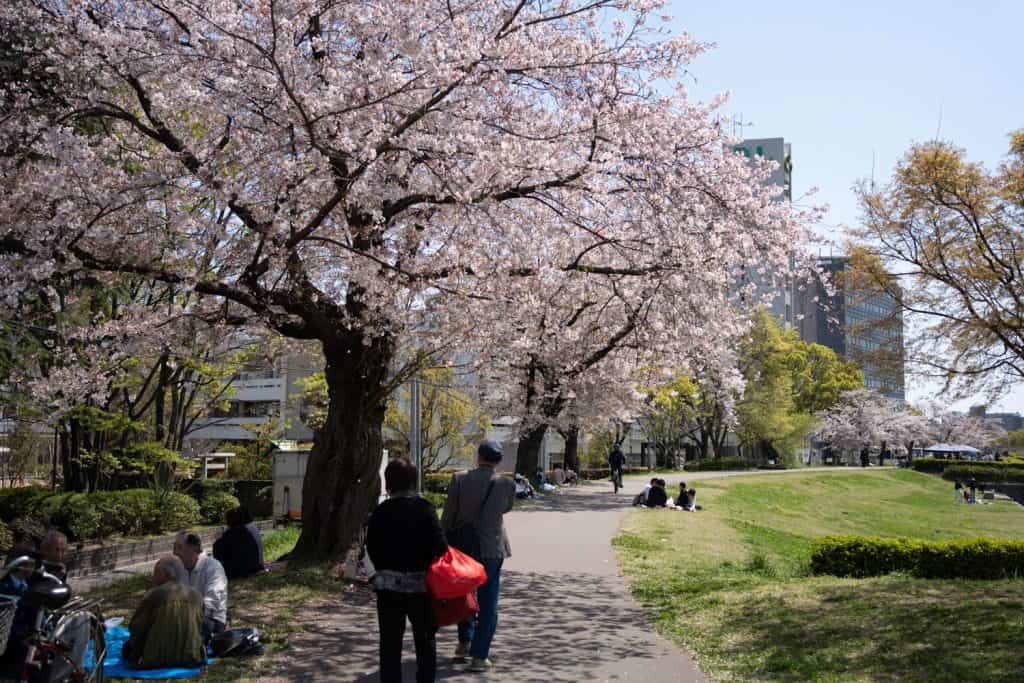
Believe it or not, we’re going to start the first part of this first day in Hiroshima off by chilling out. If you’ve just got the Shinkansen from somewhere like Osaka, although it’s a great way to travel, it’s also tiring. So there’s no better place to relax and ground yourself in the present moment than sitting on a grassy hill by the river in Hiroshima.
I honestly cannot tell you how much I enjoyed this part of the trip, so please don’t miss out on it if it’s good weather. We’ve talked about some of the most relaxing spots in Tokyo a while ago, and if I were to make a list like that for Hiroshima, this would definitely feature! Nothing quite like watching the world pass you by while you chill out!
The gentle, rolling waters of the Motoyasu River provide a soothing backdrop as you take in views of nearby mountains and cityscapes. There is an abundance of lush greenery that provides respite from bustling urban life. And with plenty of outdoor seating available, it’s easy to find a comfortable spot to sit and relax. (though I’d highly recommend going for a spot on the grass!)
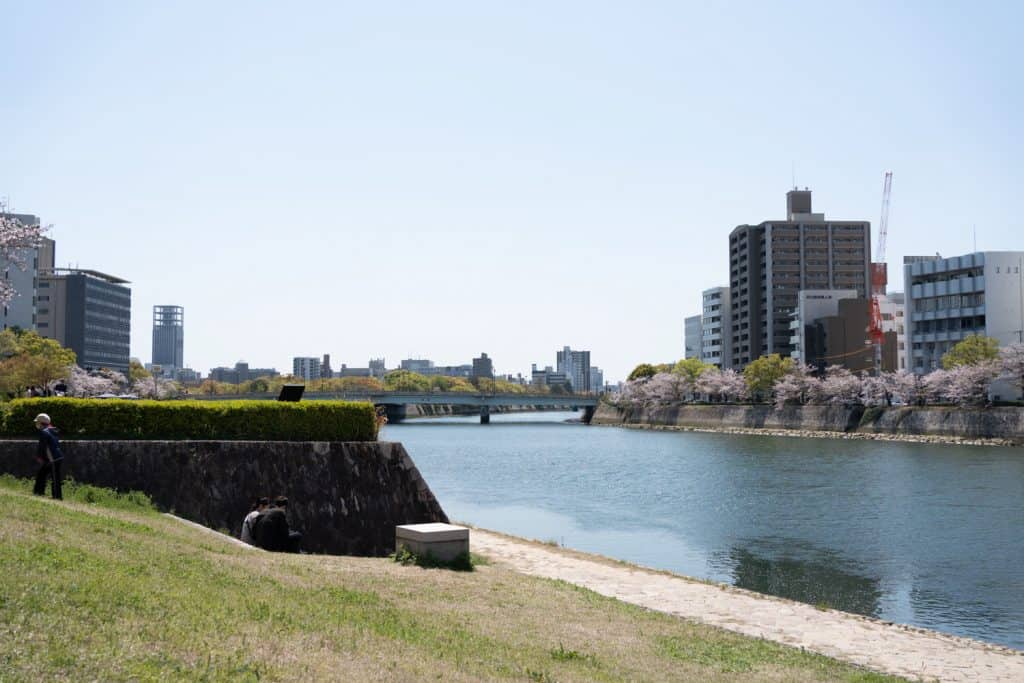
On any given day, you’ll find locals and tourists alike enjoying this picturesque location, and that was certainly the case when we got there. That said, at peak season it was incredibly quiet, especially compared to places like Kyoto. Families gather around picnic baskets filled with their favorite dishes while couples canoodle (though, this is Japan so they kind of, don’t…) on blankets spread out across the grassy banks.

Those wanting something simpler during their Hiroshima 2-day itinerary can just lay down a blanket or coat, and soak up some sunshine for a couple of hours before continuing on with their day. It may feel like you’re wasting time during your itinerary by doing this, but I’m hugely passionate about recommending that people take time to rest during their trip to Japan. Not only will it make you feel better physically, but it’ll also help you live in the present moment and make your memories more vivid and all the more special.
So, whether you’ll use this time to plan your next trip, or just to simply read a book under the shade of the trees, it’s a worthwhile addition to your 2-day Hiroshima itinerary.
Visit the Peace Memorial Park

Visiting the Peace Memorial Park in Hiroshima is an experience like no other and absolutely one you should do during your time in the city. Located in the heart of the city, the park serves as a reminder of the heartbreaking events that occurred in 1945 when an atomic bomb was dropped on the city. It is a place to honor and remember those who lost their lives and were affected by this tragedy.
The park itself is filled with monuments, memorials, and artwork dedicated to preserving its history and educating visitors. It features several structures including the Atomic Bomb Dome, Cenotaph for A-bomb Victims, Hiroshima National Peace Memorial Hall for Atomic Bomb Victims, A-Bomb Hypocentre Monument, Flame of Peace Monument, and many more. Each structure serves as a symbol of reflection and remembrance of those who perished during World War II.
The Flame of Peace Monument
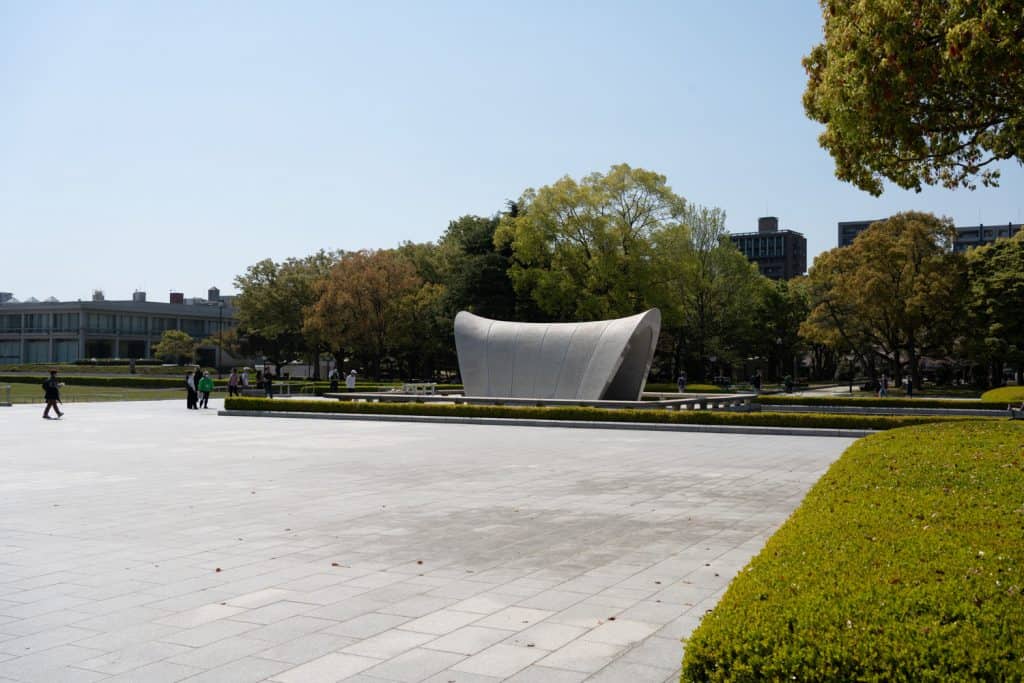
Since it was lit on August 1st, 1964, it hasn’t stopped burning. In fact, it won’t stop burning until all nuclear weapons in the world are expelled. Perhaps it’s an eternal flame, but I sincerely hope not.
When you visit the Flame of Peace Monument in Hiroshima, you are also surrounded by messages from survivors who have chosen to share their stories with future generations so that they never forget what happened here or take peace for granted again. Walking around this area, you can’t help but be moved by all that has been lost and inspired by those who have kept the Flame of Peace burning for so many years.
I’m not a fan of over-touristy areas in Japan, especially where flocks of people try to get exactly the same photo. Part of me feels like a lot of these people are missing the point of being here, but another part of me can of course understand the significance of this spot
The Hiroshima Peace Memorial Museum
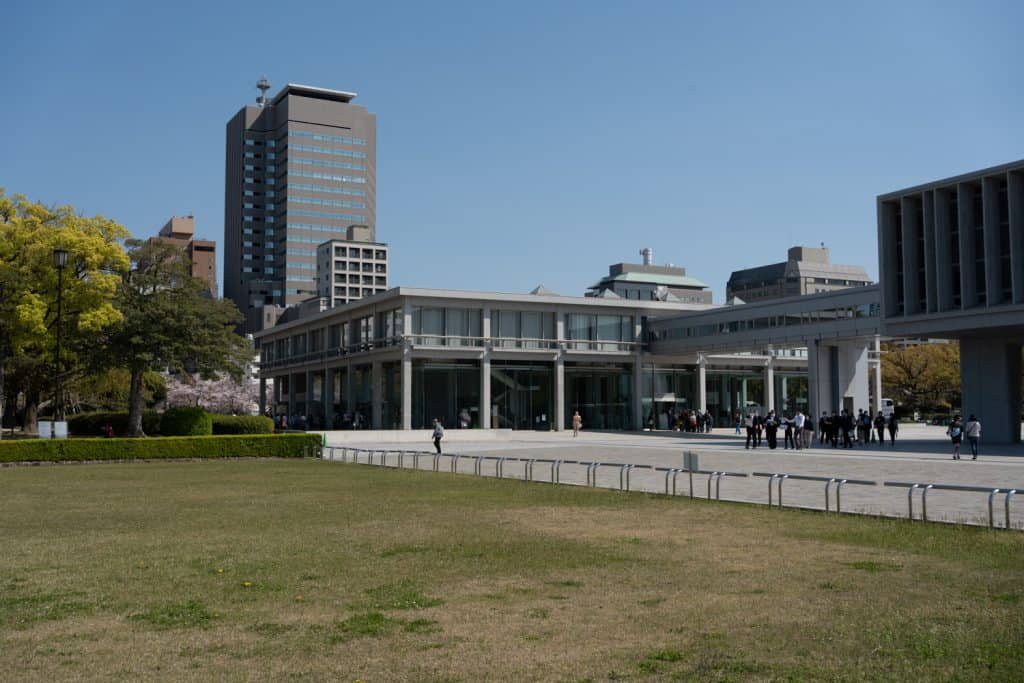
In addition to these somber reminders are several other attractions inside the area like museums and art installations that explore different aspects of Hiroshima’s history before and after the bombing.
The Hiroshima Peace Memorial Museum is one of the most important attractions to visit and costs just ¥200 to enter. I highly recommend visiting during your 2 days in Hiroshima, though the experience itself is unbelievably draining, of course.
The Hiroshima Peace Memorial Museum gives visitors a chance to learn more about this harrowing event through informative displays such as photographs taken right after the bombing and artifacts that survived it. Other attractions include interactive exhibits like Peace Boulevard which tours visitors around key sites in the city such as Nagarekawa Park or Children’s Memorial where origami cranes are hung by those wishing peace on Earth.
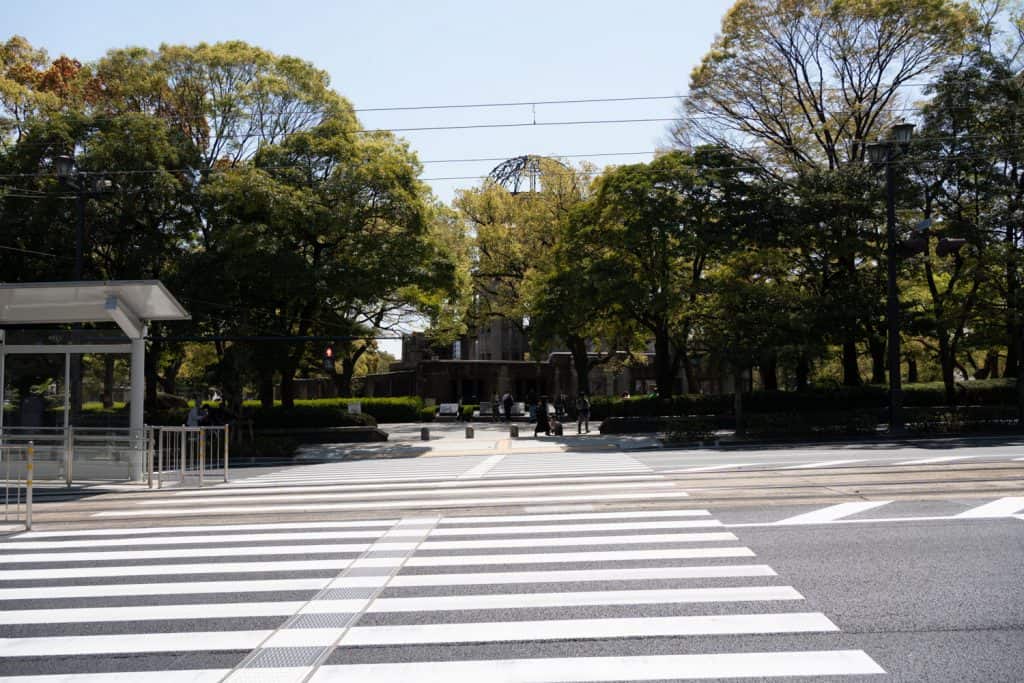
Hiroshima’s Peace Memorial Park is not just a solemn reminder but also an inspirational beacon of hope for all humanity. It is here that people from all over can come together to pay respects to those who lost their lives during this tragedy while also looking towards a brighter future with peace and harmony amongst all nations and peoples. Visiting this site will provide you with a greater understanding of what happened during one of history’s most devastating events as well as an appreciation for human resilience in overcoming hardship, in order to create a better tomorrow for all of us.
This took us a few hours to get around, so it’s worth keeping that in mind if you’re going slightly off the itinerary. While it’s undoubtabley a must to visit the park, it’s important to remember that Hiroshima is, and should be remembered for so much more than just a city that was bombed.
Grab an ice lolly
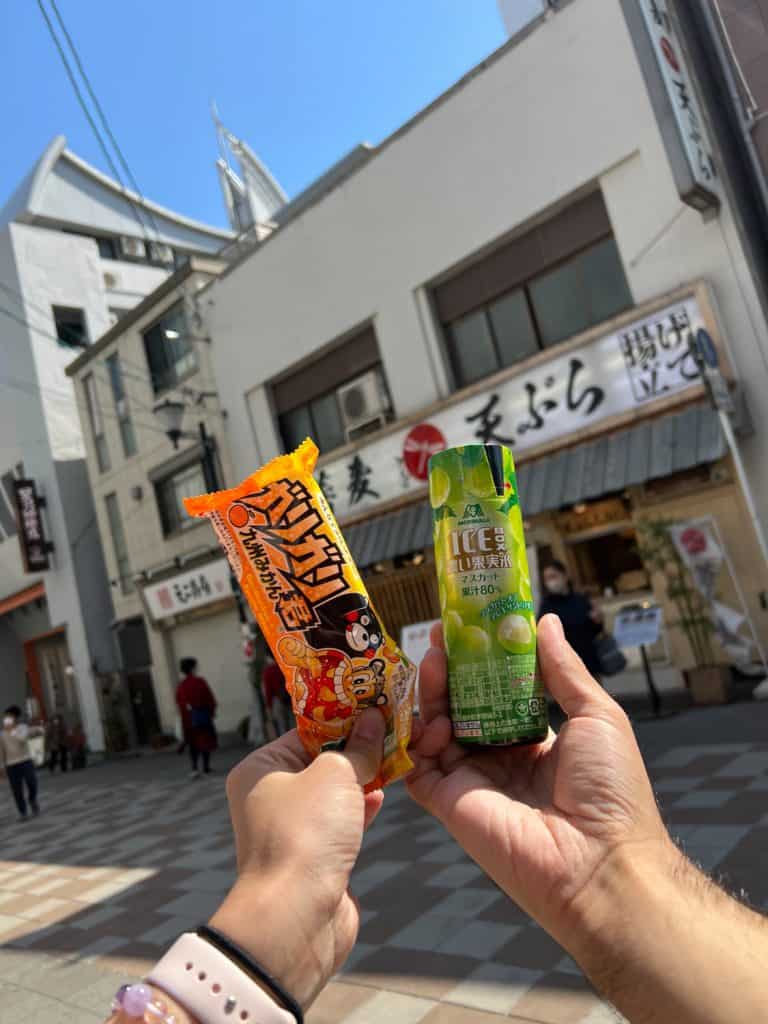
I don’t care if you’ve never seen an itinerary with ‘Grab an ice lolly’ in it, you’re going to need one after what you’ve just seen.
If you’re looking for personal ice cream recommendations, I would recommend Gari Gari. I love them! When we were in Hiroshima we picked up one of them, and some tasty grape-flavored ice (a little odd, I won’t lie), highly recommended!
Visit Hiroshima Castle

We actually did this and the next attraction on the second day, but looking back it was probably a better idea to do it on day one. Depending on how long you spent at the park and museum (and how early you arrived in the city), you can either put this in afterward or save it for the latter half of day two.
Now, I’ve already talked about how I don’t like Osaka Castle as a tourist destination. It’s too busy and the interior of the castle was a real letdown. Hiroshima castle was completely different. It costs just ¥370 ($2.80) to get inside, and it should only take you an hour or so to get around the interior and exterior of the castle.
That means it’s great to fill a small amount of time on your itinerary, but you shouldn’t need a full half a day. When you’re only in Hiroshima for 2 days, that’s a really handy thing! Plus, you don’t even need to go inside if you don’t want to, you can get some pretty stunning views of the castle from the grounds and if you’re on a time crunch, that’s still a great thing to do.
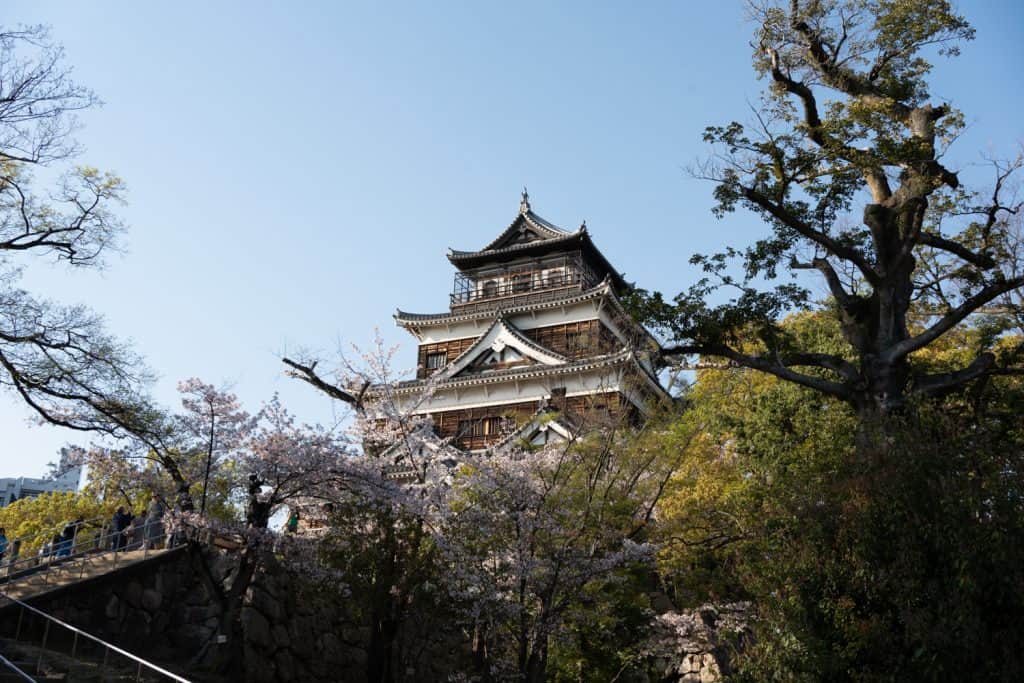
Visit Shukkeien Garden

I’ll be writing a separate post about Shukkein Garden at a later date, so I’ll just briefly touch upon it in the article. Situated just a short walk away from the castle, Shukkeien Garden is the perfect way to round off your day and be at peace with the city.
Shukkeien Garden in Hiroshima is one of the most beautiful and picturesque places to visit in the area. It is a traditional Japanese landscape garden (a big one at that!) that has been carefully designed and rebuilt, making it an ideal spot for visitors who want to take a moment to be at one with Hiroshima.
The entire garden was destroyed in the bombing with just the concrete bridge (Kokō-kyō) standing at the end. Since then, it’s been meticulously rebuilt to its former glory. At just ¥260 per person, it’s a fantastically cheap deal like many of Japan’s attractions and well worth the money.

The garden features many ponds, shrubs, and trees, as well as pavilions and bridges which provide stunning views from different angles, but the main attraction at Shukkeien Garden is its large pond known as ‘Takuei’. This pond provides a tranquil atmosphere with its reflection of surrounding foliage in its waters, while offering plenty of opportunities for the photography enthusiasts among you to capture amazing shots (I literally shot so much over here!).
In addition to this central feature, there are also several small streams running through various parts of the garden adding a touch of serenity to everything. Visitors will also find several teahouses located within Shukkeien Garden, which provide a perfect opportunity to rest and take in the surrounding scenery.
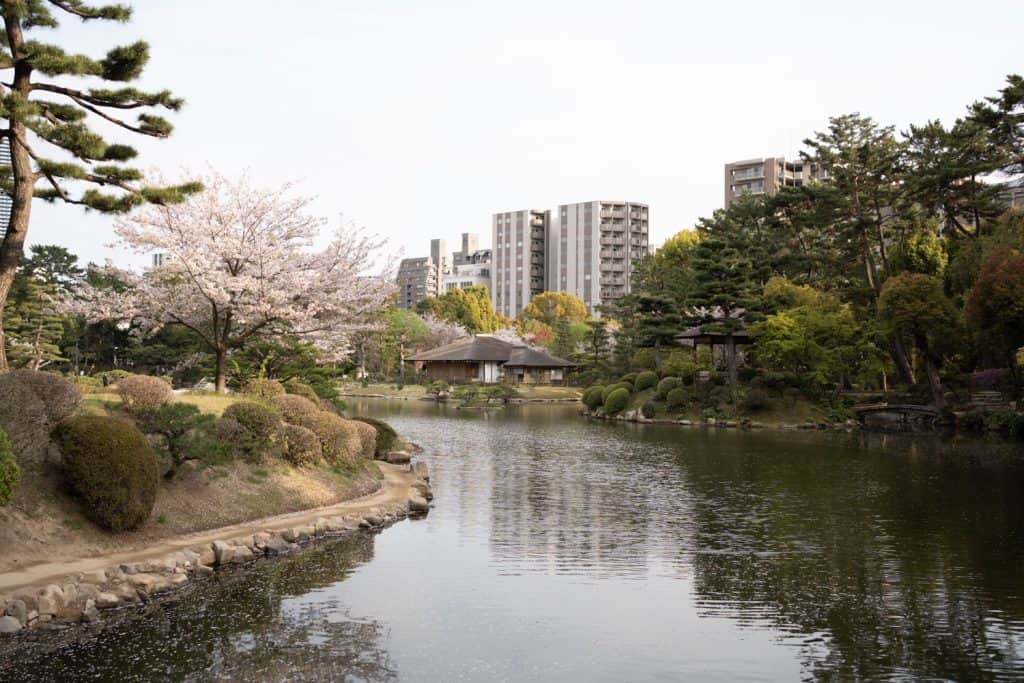
Along your journey, which I urge you to take your time on, you’ll come across a herbal garden that was once used for the Emperor, an incredible valley, a waterfall, rice fields, plum orchards, and more secret trails than you’ll be able to handle.
Even if you aren’t really a fan of Traditional Japanese gardens, I urge you to add this to your 2 days in Hiroshima at some point. You won’t be disappointed!
Food and Accommodation
After what feels like a surprisingly long day in Hiroshima, it’s probably time you grabbed something to eat and made your way to the accommodation you’ve booked. But where should you book in the first place?
Before we get to that, let’s talk about food. I just want to say that we only made it to one restaurant in Hiroshima as it was peak season and we forgot to book. If you want something specific and it’s at a busy time of year, book ahead. I’ll link to that restaurant review article when it’s up.
Hiroshima Style Okonomiyaki
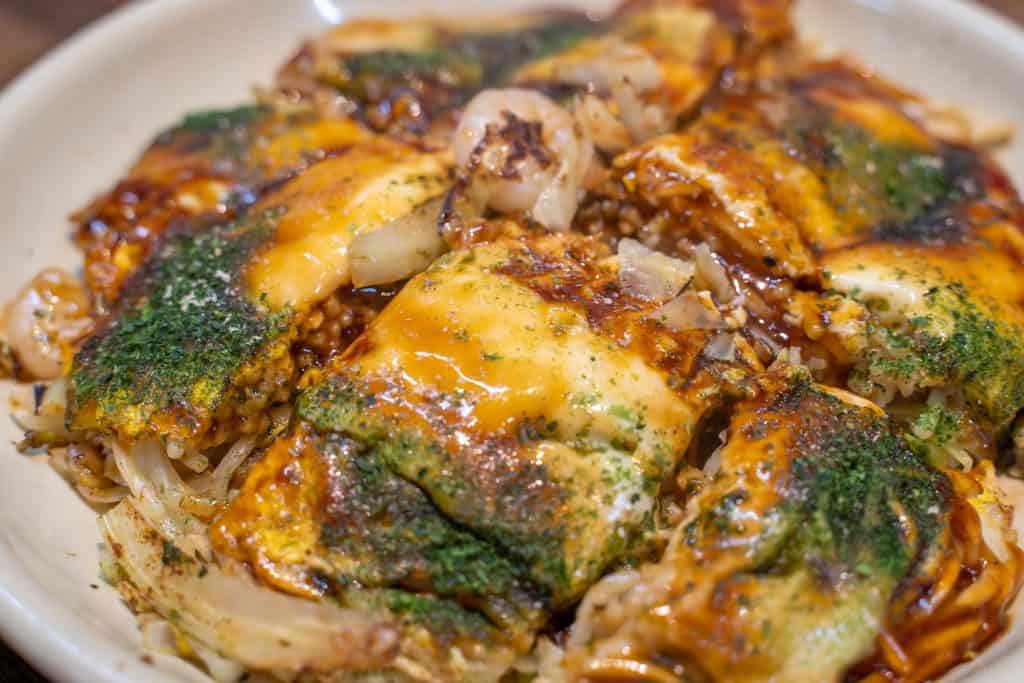
In case you’re looking for a more general suggestion, I’d say you really can’t go wrong with Hiroshima-style Okonomiyaki.
Hiroshima-style Okonomiyaki is a savory dish that you should really make an effort to eat when visiting Hiroshima for these two days. The name “Okonomiyaki” literally translates to “grilled as you like it”, and the dish certainly lives up to its name. It’s an incredibly versatile food that can be prepared in many different ways depending on your taste preferences. For instance, in Kyoto, we had Okonomiyaki with mochi, and it was literally one of the greatest things I’ve tasted over here so far!
Unlike normal Okonomiyaki which uses only batter for grilling on a hot plate until golden brown, Hiroshima style Okonomiyaki combines all ingredients together before cooking. Some people believe it gives it an even more flavorful taste compared to regular Okonomiyaki, but on the whole, it’s just personal preference.
This tasty treat has been around since the early 1900s but has only gained popularity in recent years due to its delicious flavor combination and ease of preparation. Not only is it incredibly tasty but also very filling; one serving usually contains enough food to satisfy even the hungriest stomachs! Plus, unlike some dishes from other regions of Japan, Hiroshima-style Okonomiyaki is relatively affordable.
There are plenty of restaurants and street vendors serving up the delicious treat so you won’t have to worry about going hungry! Though as I said earlier, if you’re after this dish from a specific, perhaps well-known place, it pays to be prepared to avoid disappointment. It’s also a fantastic way to experience the culture of the city, and something I’d highly recommend.
Airbnb or Hotel?
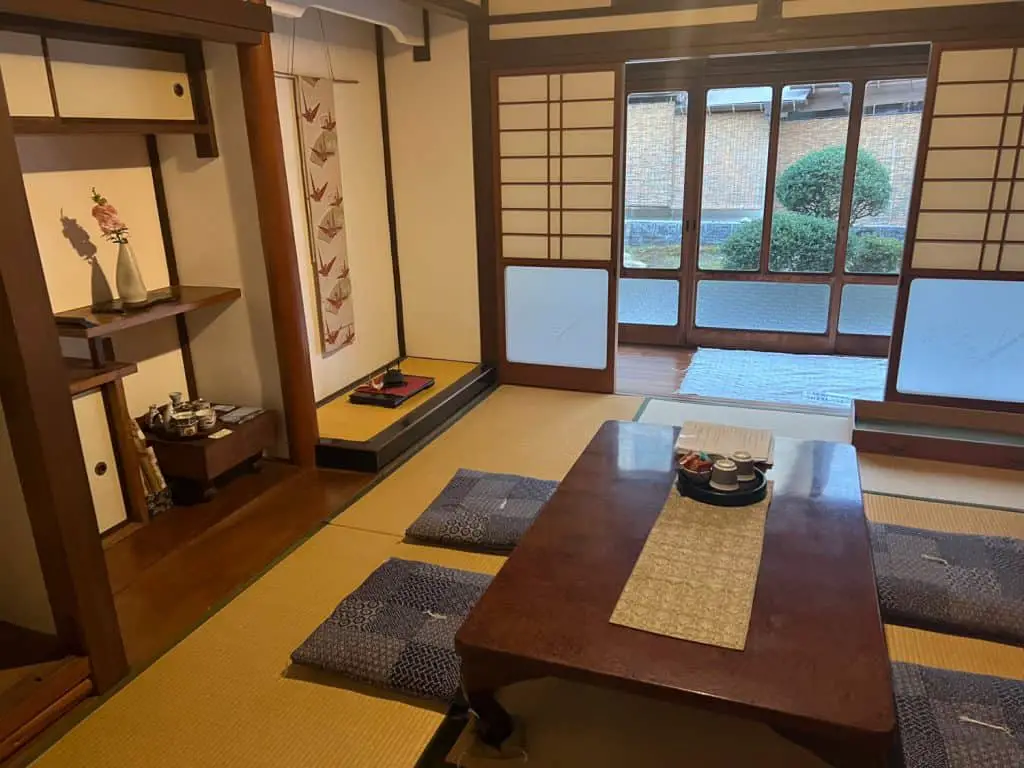
You’ll either prefer one or the other when you travel, and it’s really completely up to you. I like a mixture of both, especially when it’s a Japanese hotel. That said, we went with an Airbnb in Hiroshima and couldn’t have been happier.
If location is your biggest concern, you’ll be able to book a flat (Airbnb) in the center of the city or a hotel room. They’ll run slightly higher than average due to the location, but sometimes it’s really nice being so close to everything.
If you don’t mind a small commute (10 minutes or so) and are looking for something a little more characterful, I’d suggest booking an Airbnb out of the city. We booked one in Fuchū-chō, a quick bus ride from Hiroshima Station, and it was quite honestly the best Airbnb I’ve stayed in Japan. It was in a nice little quiet suburb with nothing but a Lawsons close by, and we were lucky enough to have one of the kindest hosts I’ve known.
She made our entire experience very personal, met us at the bus stop, and even had tea with us on the last morning. You really can’t get any better than that!
Day 2 – Miyajima
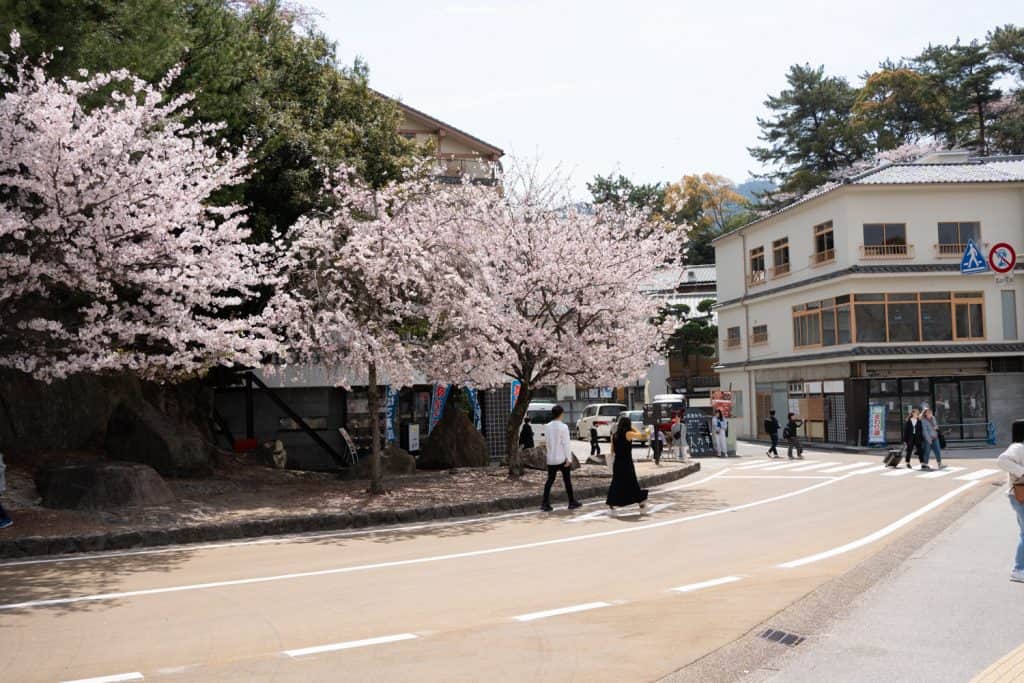
Wondering if Miyajima is worth visiting? Check out that article!
Visiting Miyajima Island (depending on the time of year you go) is a must-do experience for anyone visiting Hiroshima. Located just outside of the city, it’s an easy day trip to explore one of Japan’s most iconic sites.
How to get to Miyajima

The cheapest way to get there is by taking the streetcar from Hiroshima Station and then transferring to the Matsudai ferry (Miyajimaguchi Station) which takes you directly to Miyajima Island. For those of you traveling with a Hiroshima tourist pass or the Hiroden Streetcar and Ferry Ticket, this journey including the ferry is completely free.
If you’ve got the JR Pass, you’ll still make your way to Miyajimaguchi, but get on the JR Ferry instead of the Matsudai. It’s often a little busier because of the number of people with the JR Pass, but it’ll be free for you!
The most convenient way is probably by taking the ferry from just outside the dome you visited yesterday. Unless you’re flush with yen, I’d avoid going this route.
Once you’ve arrived at the island, there are plenty of attractions to explore. The iconic ‘floating’ torii gate is a must-see and is best viewed during high tide when it appears to be “floating” in the sea. Admittedly, this was hugely busy when I was there, and it didn’t help that we visited during cherry blossom season.
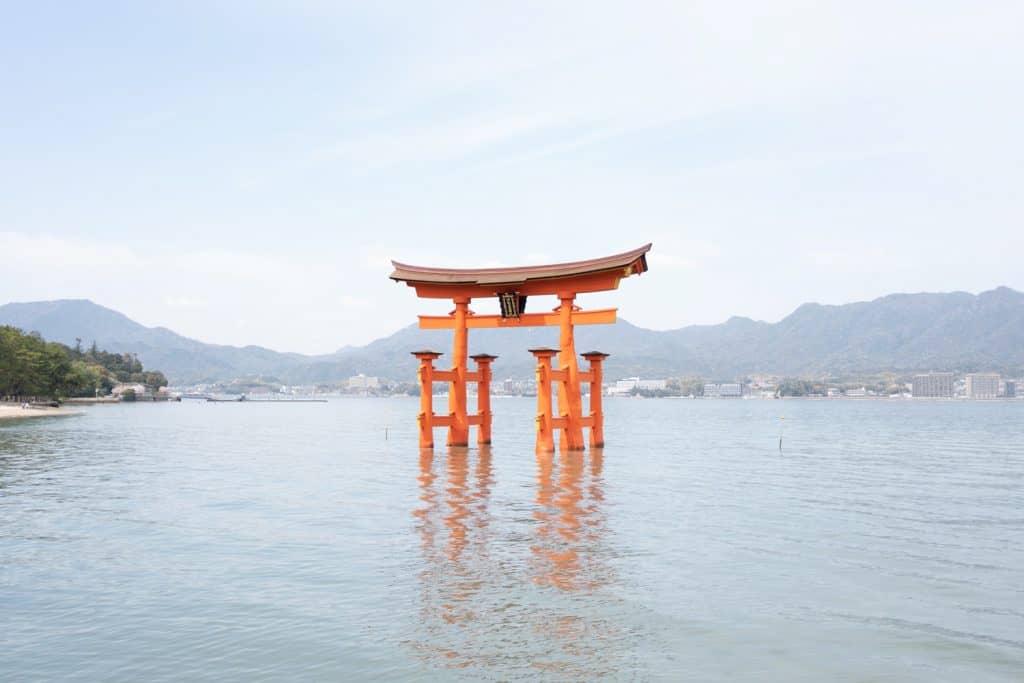
It’s definitely cool to see, but only for a minute before I got annoyed at the number of people. If you fancy, you can also wait until the tide goes out and then you’ll be able to walk right up to it.

Other attractions include Daisho-in Temple, which has beautiful gardens and contains over 500 stone statues; Momijidani Park, with its vibrant autumn foliage; and Mount Misen, which offers spectacular views of Hiroshima Bay. If you’re after a bite to eat, you should try to grab some of Miyajima’s famous oysters or get a taste of Hiroshima’s regional sweet, the momiji manju (a maple leaf-shaped cake).
At the end of your trip, you can take a boat ride back to Miyajimaguchi and grab a streetcar back to Hiroshima Station. Be sure to take note of the ferry times before you set off for the day on the Island!
While you could quite easily spend more than 2 days in Hiroshima, this Itinerary is more than enough to get a general feeling of the city and its culture. Some may argue that you could fit more into these two days, but it’s imperative to give yourself enough time so that you can actually enjoy the process rather than feeling like you’re running from one place to the next without enough time to catch your breath.
Is Hiroshima somewhere you’d like to visit, or maybe already have and I’ve missed out a key spot? Let me know in the comments below!
FAQs about visiting Hiroshima for 2 days
Can you recommend any restaurants or shops I should check out while visiting Hiroshima?
Answer: Sure! There are plenty of great restaurants and shops worth checking out while visiting the city of Hiroshima! Some popular restaurants worth trying include (a Hiroshima style okonomiyaki restaurant), Nagataya (another incredible okonomiyaki spot), and Parco della pace (an awesome vegan pizza restaurant that tasted so damn good!).
As for shopping spots, Hondori Shopping Arcade located near Peace Memorial Park is likely your best bet. If not, there’s a huge number of shopping malls dotted around the city, all you need to do is type it into google maps and see what’s near you!
How much time should I allocate to exploring each attraction?
Answer: That really depends on what type of experience you’re looking for during your visit! While we only have 2 days in Hiroshima, you can absolutely spend longer in a place if it speaks to you!
I found myself wandering around Shukkeien Park for hours because it was so beautiful. But if you just want a general suggestion then allowing 1-2 hours per attraction could make sense, though things often take longer than we first thing.
Are there guided tours available that cover different attractions around the city?
Answer: Yes – there are several guided tours available through various companies offering unique experiences throughout the city such as private walking tours with an experienced guide or visits via hop on hop off bus tours that cover multiple locations with one ticket purchase. Do research online before arriving so that you can decide which tour option works best for your schedule!
If you’re looking for my opinion, I highly recommend checking out Viator Tours. They offer things like a full day private tour of Miyajima and Hiroshima which includes everything we’ve done in this itinerary but in just one day. While that may be too much for some to do, if you’re really on a time crunch, it could be the best way to explore the area.
Is Hiroshima safe for solo travel?
Answer: As with most places in Japan, traveling solo around Hiroshima is generally considered safe as long as you remain aware of your surroundings and use your common sense. Nowhere is 100% free from crime, but on the whole there are no major concerns for solo travel and safety in Hiroshima.
Are there any nearby towns I can easily access within 2 days?
Answer: Thinking of traveling somewhere else in your two day itinerary? Or perhaps you’re considering adding an extra day on? Great! Within two days you could easily access nearby towns such as Onomichi, Iwakuni, Hatsukaichi, Mihara & Takehara. All of those are accessible by either train lines or highway buses departing from Hiroshima Station. Each town offers its own unique set of attractions & activities so plan accordingly depending on how much time you have! Ah, why is there just never enough time!?





